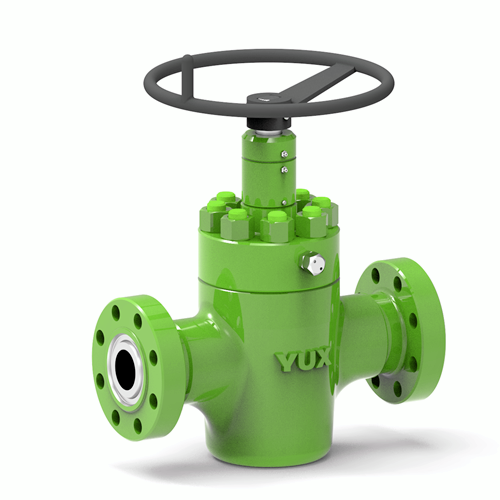-

+86-13961903990
 2025.10.13
2025.10.13
 Industry News
Industry News
Valves play a critical role in industrial pipeline systems, especially in high-pressure environments such as oil and gas. The performance and reliability of a valve directly impact the stability of the entire production system. API 6A Gate Valve and API 6D are two widely used valve standards, each applied in different industries: API 6A is typically used in the oil and gas industry, while API 6D is used in general industrial pipeline systems. Although these two valves overlap in certain areas, they have distinct design standards, application ranges, and performance requirements.

The API 6A standard, developed by the American Petroleum Institute (API), is primarily intended for use in the oil and gas industry, especially in high-pressure and extreme conditions. API 6A valves are designed to withstand the extremely high pressures and complex conditions encountered during drilling and production operations, and they must meet a series of rigorous safety and performance requirements. These valves are typically used in Christmas Tree systems, offshore platforms, and other high-pressure, high-temperature, deep-water, and extreme cold environments.
In contrast, the API 6D standard applies to valves used in fluid transport pipelines. It has a broader application scope, covering the transportation of oil, gas, water, chemicals, and other general industrial fluids. The focus of API 6D valves is to ensure tight sealing and durability during long-term operation in regular industrial pipeline systems. API 6D valves are commonly used in pipeline systems for natural gas, oil, and petrochemicals.
API 6A valves are typically designed to withstand very high operating pressures, with pressures that can reach 20,000 psi. These valves are ideal for oil drilling operations and offshore platforms, where pressures often exceed standard levels, requiring special attention to sealing performance and structural integrity.
Compared to API 6A, the design pressure for API 6D valves is lower, typically ranging from 1,500 psi to 2,500 psi, although some high-pressure versions can achieve higher ratings. However, these valves are not suitable for extreme environments. The temperature range for API 6D valves typically falls between -29°C and 121°C, making them suitable for regular industrial pipeline systems.
API 6A valves are designed for high-flow, high-pressure, and extreme working conditions. They typically feature a full-bore design to minimize flow resistance, which is particularly important in high-pressure applications. The materials used for API 6A valves are rigorously selected for their corrosion resistance, high-temperature tolerance, and high-pressure endurance, ensuring that the valves perform reliably under harsh conditions.
API 6D valves are designed to be more standardized, suitable for use in regular industrial pipeline systems. They are typically simpler in structure and include types such as ball valves and gate valves. The design of API 6D valves emphasizes flow control stability and long-term sealing performance, making them ideal for general industrial applications.
API 6A valves are generally used for handling highly corrosive, complex fluid media, such as oil and natural gas. These fluids are often accompanied by high pressures, high temperatures, and potentially abrasive particles. Therefore, API 6A valves must be capable of maintaining tight seals, corrosion resistance, and wear resistance under these extreme conditions. They are widely used in oilfield drilling, production operations, and deep-water oil and gas exploration.
In comparison, API 6D valves have a broader range of applicable fluids, including oil, natural gas, water, and chemicals. Although the pressure and sealing requirements are lower than those for API 6A valves, API 6D valves still need to ensure stable control of fluid media during long-term operation. These valves are widely used in pipeline systems for transporting oil, gas, and water in typical industrial applications.
Because API 6A valves are often used in deep-water and high-pressure environments, installation tends to be more complex. Special care must be taken to ensure tight sealing during installation, and the valves must undergo strict pressure testing after installation. Due to the extreme operating conditions, regular maintenance and component replacements are required to ensure that the valve remains in optimal working condition.
In contrast, API 6D valves are simpler to install and maintain. They are designed for use in standard pipeline systems, and installation typically requires ensuring that the valve matches the pipeline configuration. During operation, periodic checks of the valve’s sealing performance and operational function are generally sufficient for maintenance.
Due to the high-strength materials, precision manufacturing processes, and design considerations for extreme pressure and temperature conditions, the production cost of API 6A valves is relatively high. While these valves are essential for high-performance applications, their higher cost can impact the overall budget of projects.
In contrast, API 6D valves are more economical. Their standardized design and simpler manufacturing process result in a lower production cost. These valves are ideal for large-scale applications where cost-efficiency is a significant consideration.
| Feature | API 6A Gate Valve | API 6D Gate Valve |
|---|---|---|
| Applicable Industry | Oil, gas, high-pressure environments | Oil, gas, water, chemicals, general industry |
| Maximum Pressure | 20,000 psi | 1,500 psi to 2,500 psi |
| Temperature Range | -46°C to 121°C | -29°C to 121°C |
| Structural Design | Full-bore design, high-strength materials | Standardized design, suitable for general pipelines |
| Applicable Media | Highly corrosive, high-pressure fluids | General fluids like oil, water, etc. |
| Cost | Higher | Lower |